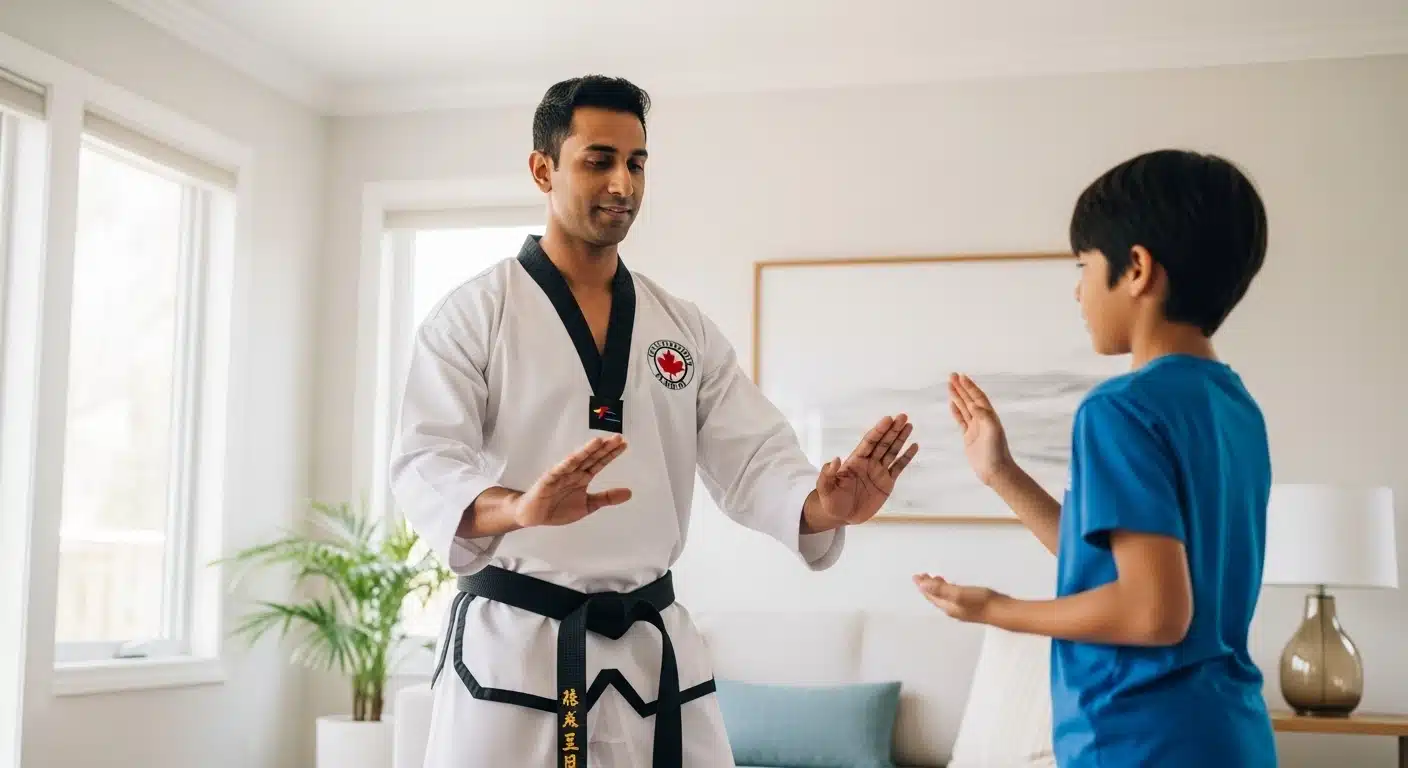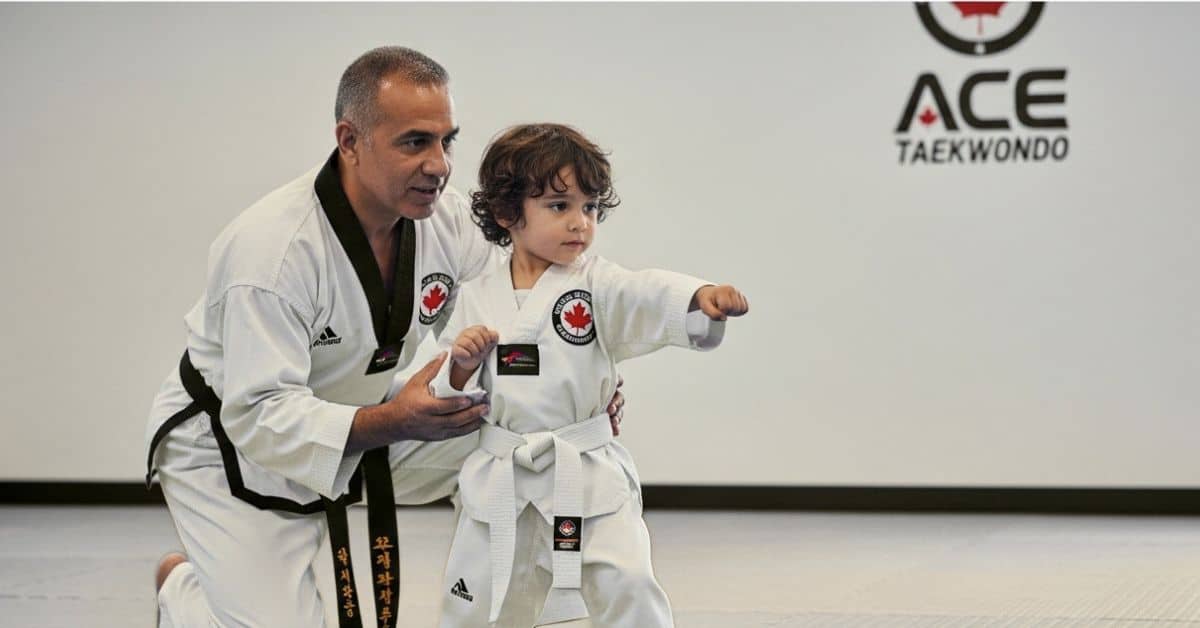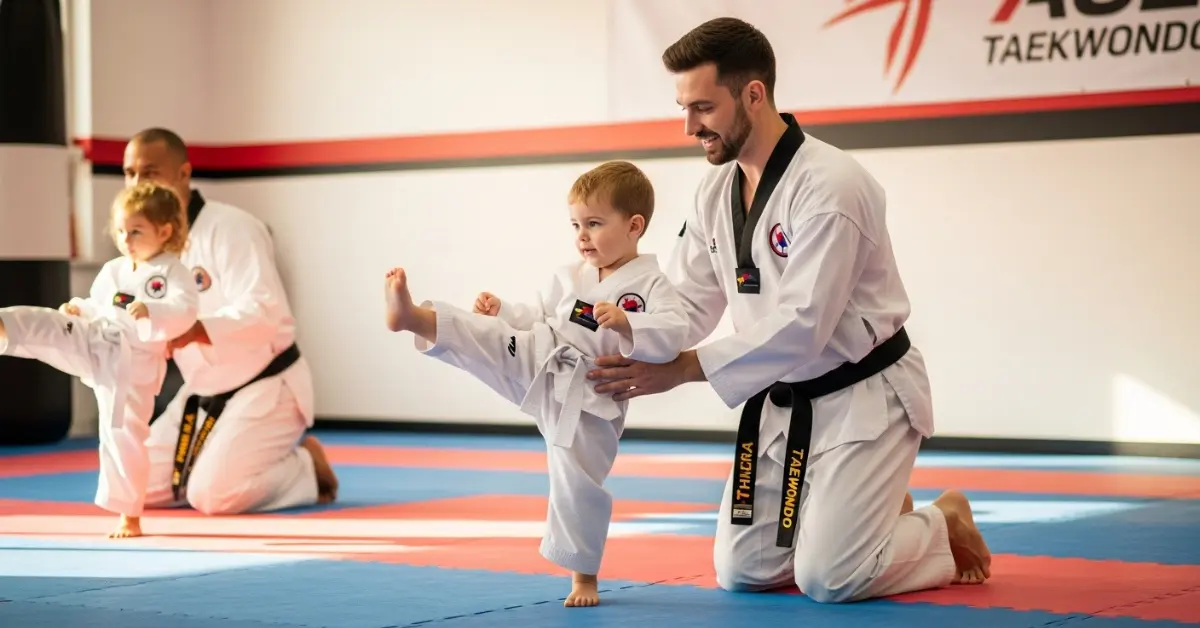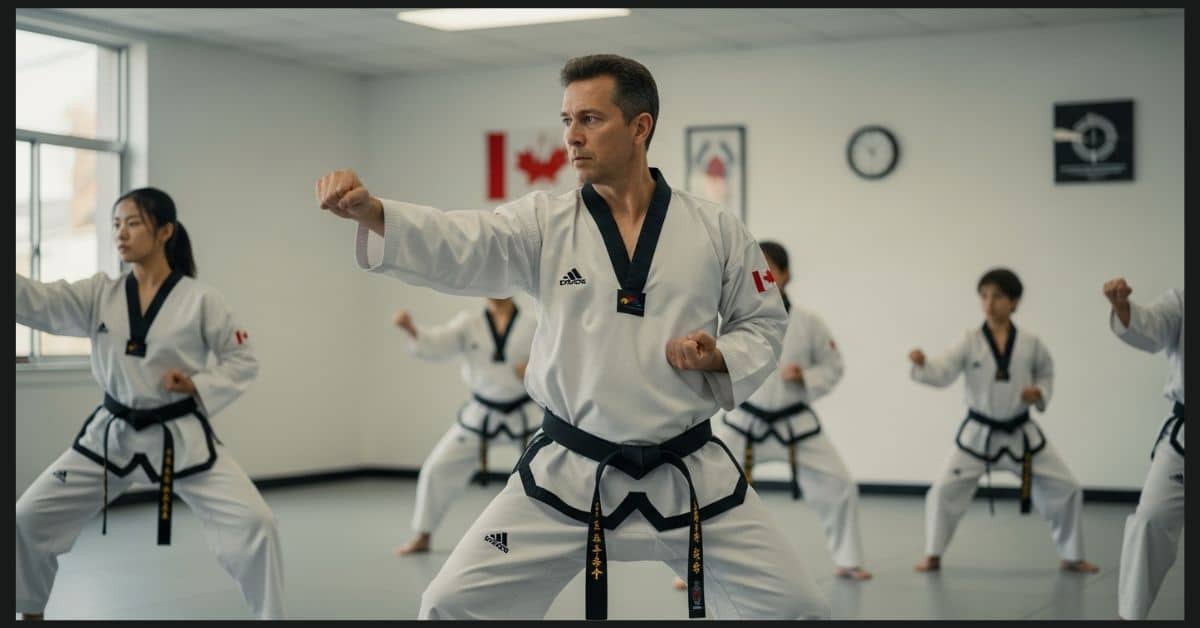As Master Viresh from Ace Taekwondo, I have spent years teaching students of all ages. Martial arts is more than learning kicks and punches. It is a path that builds character, teaches life values, and shapes who you become outside the dojo. Every student who steps on the mat leaves with lessons that stay for life. Let me share with you 10 powerful life lessons martial arts training teaches us.
Here are 10 Life Lessons You Learn Through Taekwondo
1. Discipline and Respect in Martial Arts
Discipline is the first lesson every student learns. You cannot master Taekwondo or Karate without discipline. Training sessions demand focus, practice, and time. You bow to your teacher and peers as a sign of respect. Soon, this respect grows beyond the dojo. Students start respecting parents, teachers, and friends. Martial arts builds a disciplined lifestyle where respect is part of daily life.
2. Confidence Building in Martial Arts
Many students join class shy and unsure of themselves. Step by step, martial arts gives them confidence. Breaking boards, learning new forms, or sparring helps them believe in their strength. Confidence from martial arts does not stay in the dojo. It follows them to school, work, and life. A child who once feared speaking in class can now stand tall and lead.
3. Self-Control and Emotional Balance
In martial arts, strength is not about how hard you hit. It is about knowing when not to hit. Training teaches students to control their actions and emotions. Breathing exercises, focus drills, and calm sparring help balance the mind. Students learn not to react in anger but to respond with control. This emotional balance supports healthy relationships and wise choices.
4. Perseverance Through Martial Arts
Learning martial arts is never easy. Every belt test pushes you harder than before. Sometimes you fail, but you get back up. This is perseverance. Martial arts shows you that success comes from effort, not luck. Students learn that challenges in life are like belt tests. With patience and hard work, you rise above them. Perseverance becomes a natural part of who you are.
5. Goal Setting in Martial Arts Journey
Every student starts as a white belt, with the dream of earning a black belt. The journey between these belts teaches goal setting. Each stripe, each form, each skill is a small goal. Students learn how to set goals, work toward them, and celebrate progress. These lessons apply to studies, careers, and personal life. Martial arts turns goal setting into a habit of success.
6. Mind-Body Harmony and Martial Arts
Martial arts unites the mind and body. Training requires balance, coordination, and focus. You cannot separate the mind from the body in practice. Students develop awareness of how they move and think at the same time. This harmony improves health, sharpens the mind, and lowers stress. Over time, martial arts creates a balanced lifestyle where mind and body work as one.
7. Character Development Through Taekwondo
Martial arts is not about being the strongest fighter. It is about building character. Honour, honesty, and humility are key values in training. Students who may once have lacked patience or kindness learn these values step by step. Martial arts shapes them into strong, respectful, and trustworthy people. Parents often tell me how their children change in behaviour and attitude after training.
8. Personal Growth Through Martial Arts Practice
Every student grows in ways they do not expect. Some find leadership skills, others find courage, while many discover self-belief. Personal growth comes from facing fear and moving past it. Whether it is the first sparring match or the last belt test, each step adds to growth. Martial arts becomes a journey of becoming the best version of yourself.
9. Resilience Learned in Martial Arts Classes
Life throws many challenges. Martial arts teaches resilience, the power to rise after falling. During sparring, you may lose points. During training, you may miss a step. But you keep going. This resilience carries into school exams, work stress, or personal struggles. Students realise failure is never final—it is just a step to bounce back stronger.
10. Life Lessons from Martial Arts Training
The final lesson is that martial arts gives you life skills beyond the mat. From respect and discipline to perseverance and resilience, these lessons shape who you are. Whether you are a child, teen, or adult, martial arts prepares you for life. It is a training ground not just for the body but for the heart and mind.
Why These Lessons Matter at Ace Taekwondo
At Ace Taekwondo, we do not only teach kicks and forms. We guide students in building a life of respect, balance, and strength. Every class is a chance to grow in character and spirit. I, Master Viresh, have seen students transform with these life lessons. These lessons stay long after the belts and uniforms fade. They create leaders, role models, and strong individuals in society.
Conclusion
Martial arts is a journey that changes lives. The lessons of discipline, confidence, self-control, perseverance, goal setting, harmony, character, growth, and resilience are timeless. At Ace Taekwondo, I ensure every student learns these values. If you are looking for more than just a sport, martial arts is your answer. It builds skills for the dojo and for life.
Read more: How Taekwondo Boosts Brain Power and Sharpens Focus
Frequently Asked Questions
What life lessons do kids learn from martial arts?
Kids learn respect, discipline, and confidence through martial arts. They also develop self-control and resilience that help them in school and daily life.
How does martial arts help with character development?
Martial arts builds honesty, respect, and responsibility. Students learn to treat others with kindness while working hard to improve themselves.
Can martial arts training improve mental health?
Yes, martial arts helps reduce stress and improve focus. The training balances the mind and body, giving students better control of emotions.
Why is perseverance important in martial arts?
Perseverance is key because progress in martial arts takes time. Students learn to keep trying after failure, which builds resilience for life.









